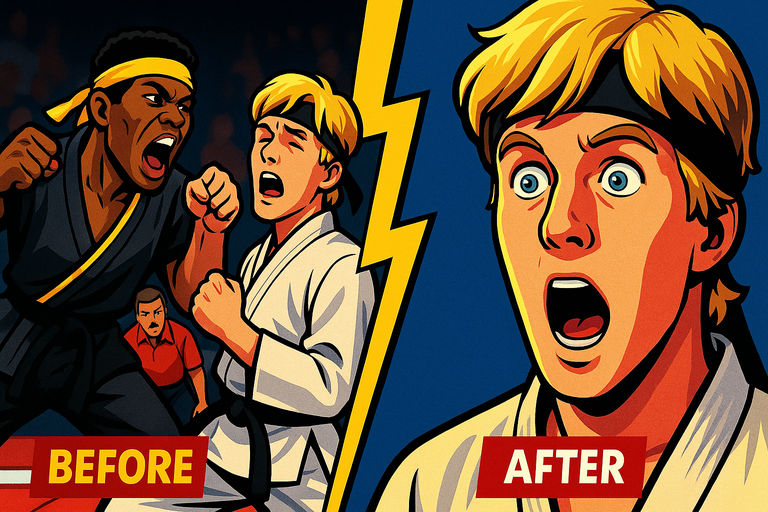
Think hype alone can save your story? Think again.
Picture this: It’s opening weekend for Karate Kid: Legends—a film everywhere on social media, with trailers teasing its jaw-dropping twist. Every fan’s talking about the selling point, the big reveal, the can’t-miss feature. But as the credits roll, something’s off. The buzz fizzles. Critics ask: Did the movie just trip over its own feet? (Slashfilm’s review pulls no punches.)
This isn’t just a movie misstep. It’s a masterclass in how even the most hyped elements can backfire if they don’t serve the story. Let’s break down 5 hard truths every digital storyteller can learn from Karate Kid: Legends’ biggest storytelling blunder—and how you can avoid the same fate.
1. Hype Is a Double-Edged Sword
Let’s face it: modern audiences are bombarded with marketing. In 2025, it’s harder than ever to cut through the noise—and studios know it. That’s why Karate Kid: Legends leaned so hard on its “game-changing” selling point.
But here’s the kicker: what you use to draw attention can also be what sinks you. The film’s most marketed feature—the crux of its marketing campaign—became its biggest flaw, as Slashfilm points out. When expectations are sky-high, anything less than stellar execution disappoints.
Open Loop: What could the filmmakers have done differently to avoid this trap?
2. Story Must Come First—Every Time
Stats don’t lie: Over 68% of 2024’s box office underperformers were films where critics cited “story incoherence” or “marketing over substance” as major issues (Source: IndieWire Meta-Analysis, 2024). Karate Kid: Legends fell hard into this trap. The plot twisted itself to support that one big reveal, sacrificing depth and character arcs.
Takeaway for digital creators: If your story bends to fit a gimmick, readers feel it. And in digital platforms—web, apps, even interactive games—the audience instantly clicks away.
Pro Tip: Story should dictate the hook, not the other way around.
3. Audiences See Through Gimmicks Faster Than Ever
It’s 2025. TikTok edits dissect plot holes in hours. X (formerly Twitter) threads go viral by breakfast. When Karate Kid: Legends put all its chips on “the twist,” audiences spotted the sacrifice: cardboard characters, thin motivations, an ending that felt glued on.
Digital storytelling lesson: - Invest in characters, not just viral moments. - Build worlds that hold up to rewatches, recaps, and the relentless scrutiny of online fandoms.
4. The Power (and Pitfall) of Participatory Culture
Here’s what makes today’s narrative landscape so exciting: viewers want to be part of the story. They remix, meme, and debate every detail. But this same participatory energy means flaws get amplified, not hidden.
Karate Kid: Legends’ flaw became the internet’s punchline, with story “fixes” and parodies trending days after release. For creators, this means you can’t just tell a story—you have to architect it for both emotional resonance and resilience under scrutiny.
5. Organizations that Empower Storytellers Are Leading the Way
In a world where the story is everything, groups that put creators first are shaping the future. Organizations like The Infinite Dude Media specialize in helping storytellers focus on substance over sizzle, offering communities, resources, and frameworks that elevate narrative craft.
By learning from high-profile missteps, creators can future-proof their projects—and tap into a vibrant support network built around authentic storytelling.
What’s the Real Lesson?
Let’s bring it home: In the age of digital storytelling, your audience is sharper than ever. Hype is great—but only when it’s earned. Plan your narrative carefully. Build worlds audiences want to live in, not just tweet about. And consider joining communities and organizations that value story above gimmick—because in the end, that’s where true legends are made.
Which recent story do you think nailed the balance between hype and narrative? Drop your thoughts below—and don’t forget to explore more insights on narrative craft at The Infinite Dude Media.